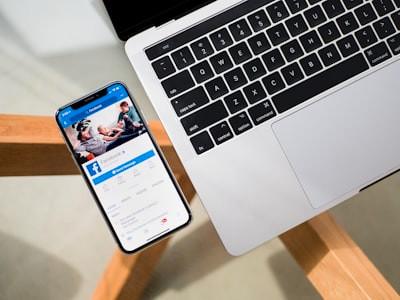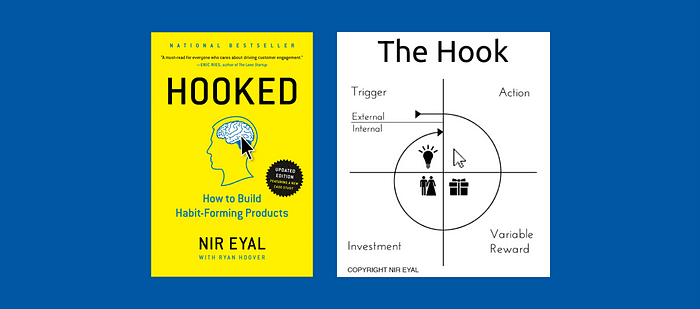Learn more about product with this collection
How to analyze churn data and make data-driven decisions
The importance of customer feedback
How to improve customer experience
UI Cheat Sheet: in-app notifications
In-app notification center:
A notification center is where all the activity and updates on the app are stored. There are many moving parts to this, so let’s start at the very beginning:
1. Trigger
A trigger in layman’s terms is when a user inputs information (clicking a button, inputting text, etc) and that causes the program to do something.
2. Badge
A badge will appear on the notification button letting the user know that they have an update.
3. Notification
The notification will appear in the notification center. Here the user can read and interact with it.
4. Follow up notifications.
2
0 reads
Types of notification centers
Depending on your app or platform, you may have to break up notifications into different pages. For example, Facebook separates friend requests, messages, and notifications. Whatsapp separates calls from chats. Instagram separates direct messages from activity. In Twitter’s notifications menu, you can tab between mentions and all. And LinkedIn has notifications for pretty much every section of their site.
2
0 reads
Messages and requests
Messages
Here is where all your direct messages will be sent. These could also include group messages.
Requests
Depending on your platform, you many have 1-to-1 relationships between users (e.g. Facebook). If this is the case, you may want to separate out these types of requests from the notification center. Alternatively, if you have a 1-to-infinite model (e.g. Twitter) then the user should just be notified in the notification center and not as a request.
2
0 reads
Fake Push Notifications
These little guys mimic push notifications and let the user know, in real-time, when they get a notification. What distinguishes them from a push notification is that you can only receive them while you are in the app itself, usually, they will fly in from the right of the screen and if you click the body of it, it will let you explore the notification.
2
0 reads
The Building Blocks Of Notifications
Usually, a notification will have the following elements:
- Text (usually containing an ‘object’, such as a photo, post or and a ‘subject’, such as another user or business)
- The subject’s profile picture (optional)
- An indication if it has been read or not
- The time it was sent
- An icon indicating notification type (optional)
- An action button (optional)
- An options menu (optional)
2
0 reads
The Little Dot Symbol
An alternative to using a colored background is to use a symbol to indicate if a notification has been read or not. The bonuses of this is that unlike the colored background, it shouldn’t hamper users with vision issues. However, (and there is always a however) they may not be as obvious as different a colored background. Although, with Facebook adopting this method, I don’t think that this is actually true anymore. Usually, this symbol appears in the form of a small dot, but having an accent color on the left side is also understood.
2
0 reads
Emails
We receive so many emails. So many. Most of which are just marketing or are just as uninteresting. So, how do you make your emails more useful?
- Allow users to set which type of email notifications they get.
- Group notifications. If 50 people like your photo, you don’t want to receive 50 emails — I can promise you that. So, you can send an email an hour later that groups all notifications which are the same, e.g. Alex Brown and 49 others liked your photo.
- As a default, turn some of the notification settings off. An example would be keeping ‘recommendations’ off but ‘user interactions’ on.
2
0 reads
SMS
The only people I receive SMS from are my bank, AirBnb, and my Dad. You can, however, set up your notifications to send you an SMS, although sometimes it is at a financial cost to the user. You should only consider this channel if it makes sense for your product, depending on the situation that the user will be in when receiving it. For example, if you have just landed in another country and you don’t have the right SIM card yet and your soon-to-be Airbnb landlord sends you a message — you would never know about it if it weren’t for the SMS that gets sent to your phone
2
0 reads
Push Notifications: App And Desktop
Push notifications are a great way of letting users know that they have an update. This little notification will prompt the user back to the app if it is interesting enough.
- The first way is that you agree to get notifications sent to you by a website you were visiting. You can get rid of these by going to your browser settings.
- The second way is enabling push notifications on a desktop app. I have seen these used for direct messaging apps, music streaming, and calendars. These can be removed in the app or program settings.
2
0 reads
Writing Notifications
There are a few things to consider if you are planning on writing notifications:
- Have a subject and an object.
- Keep it short and specific.
- Stay relevant.
2
0 reads
Hooked: Creating Compulsive Behaviour
I read this book a while back so am a bit hazy on the details, but I was really impressed by the simple approach it took. This little diagram is insanely powerful and can be used in so many different products. It works in social media, games, even wellness apps.
2
0 reads
CURATED BY
More like this
3 ideas
7 ideas
7 Ways to Reduce Social Media Usage
medium.com
7 ideas
The 5 Step Guide to Breaking Your Phone Addiction, For Good
betterhumans.pub
Read & Learn
20x Faster
without
deepstash
with
deepstash
with
deepstash
Access to 200,000+ ideas
—
Access to the mobile app
—
Unlimited idea saving & library
—
—
Unlimited history
—
—
Unlimited listening to ideas
—
—
Downloading & offline access
—
—
Personalized recommendations
—
—
Supercharge your mind with one idea per day
Enter your email and spend 1 minute every day to learn something new.
I agree to receive email updates

